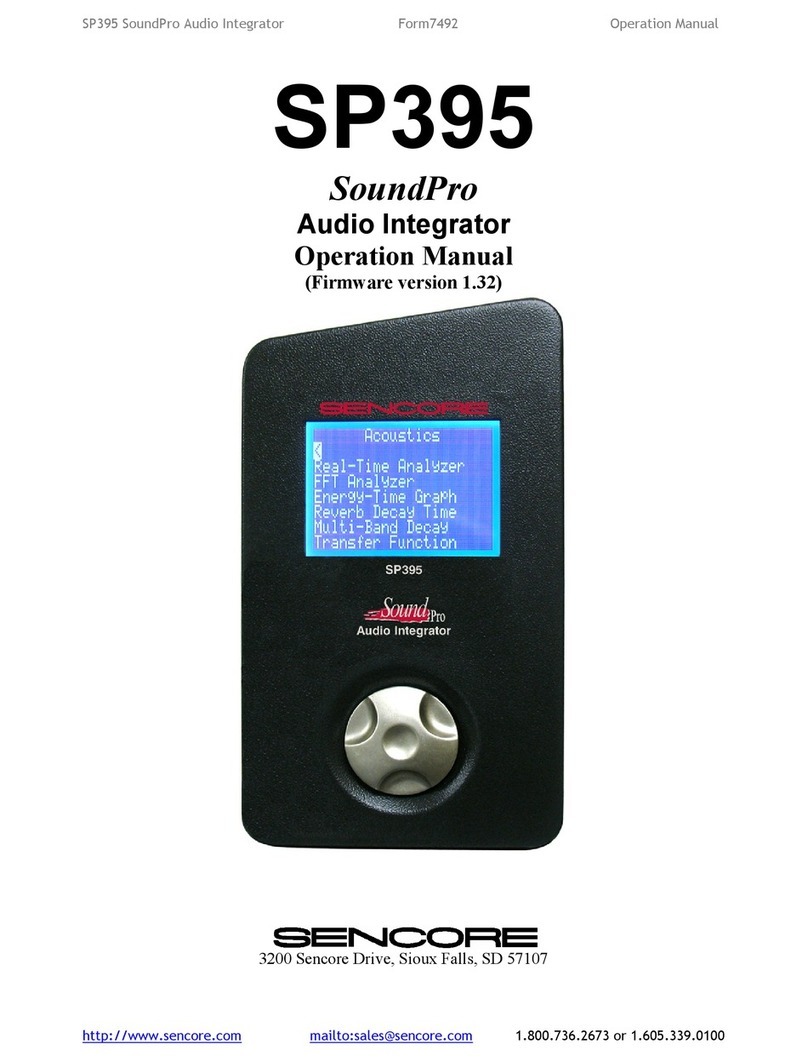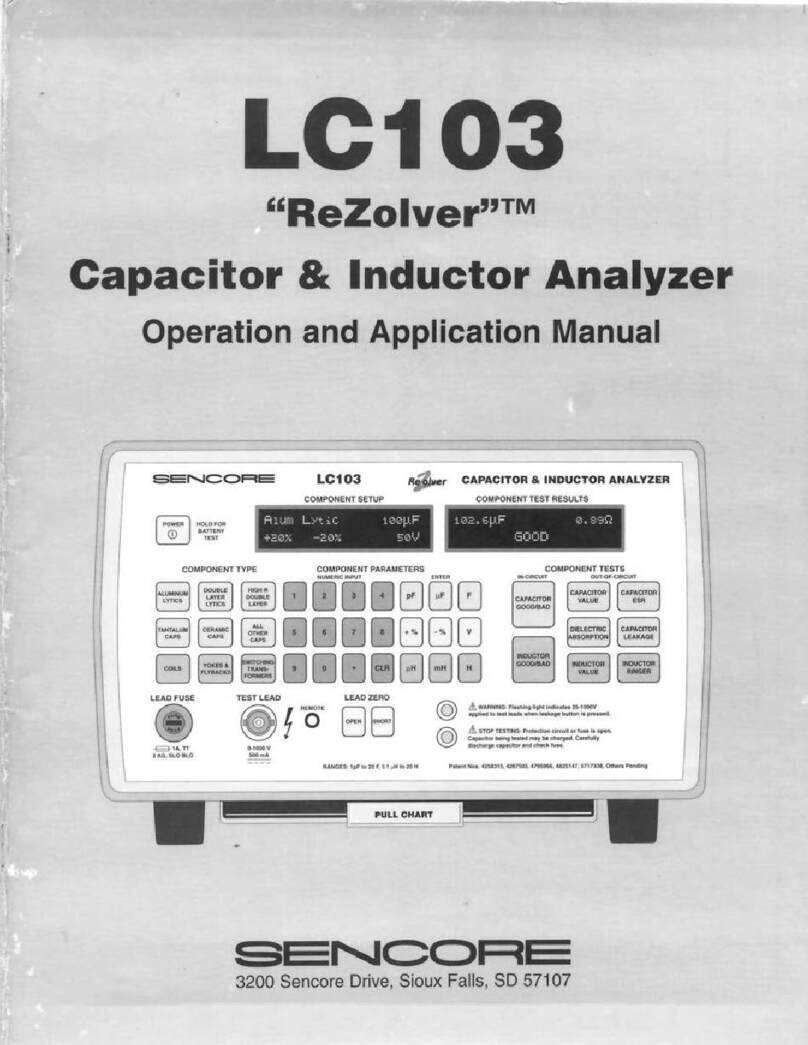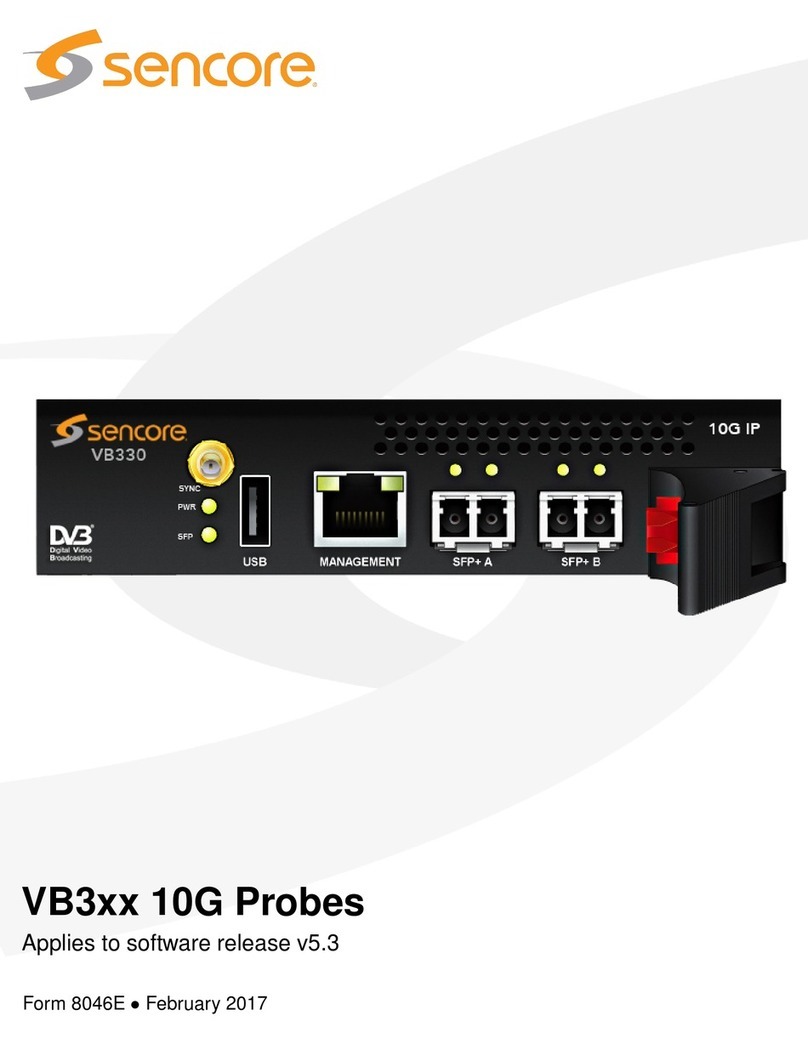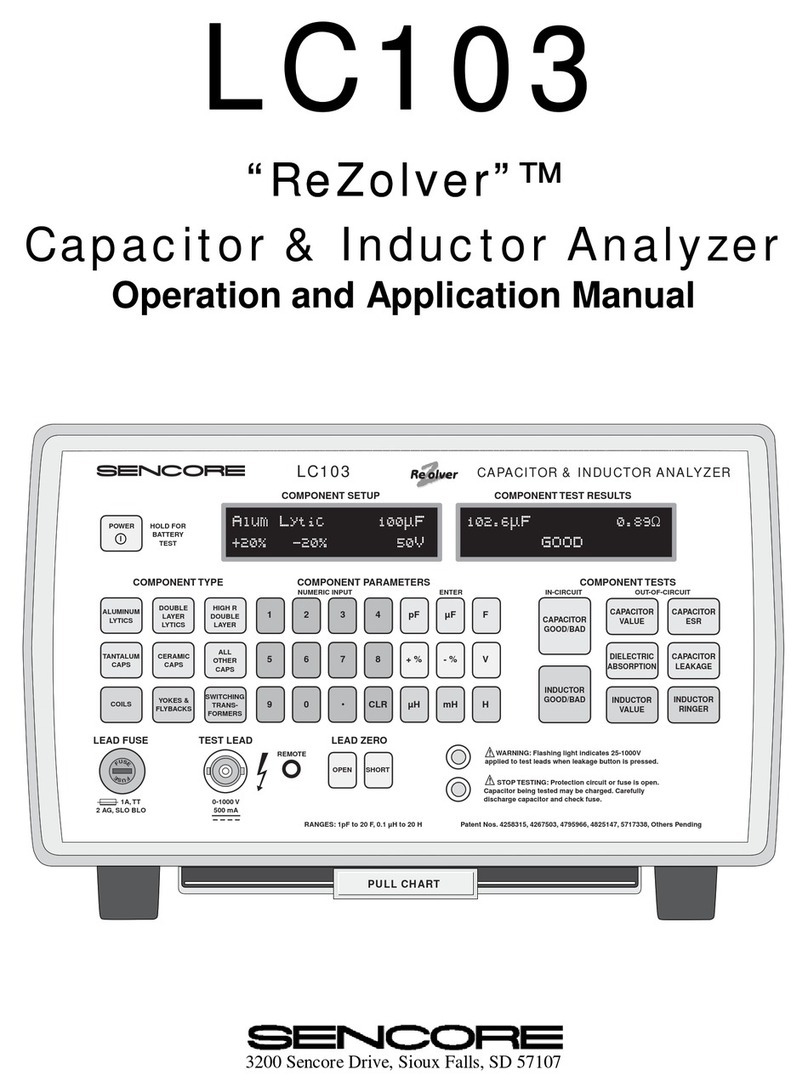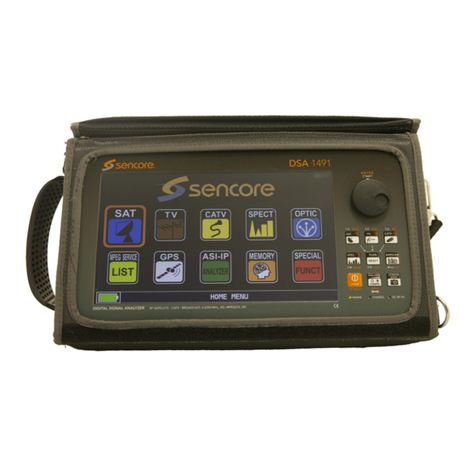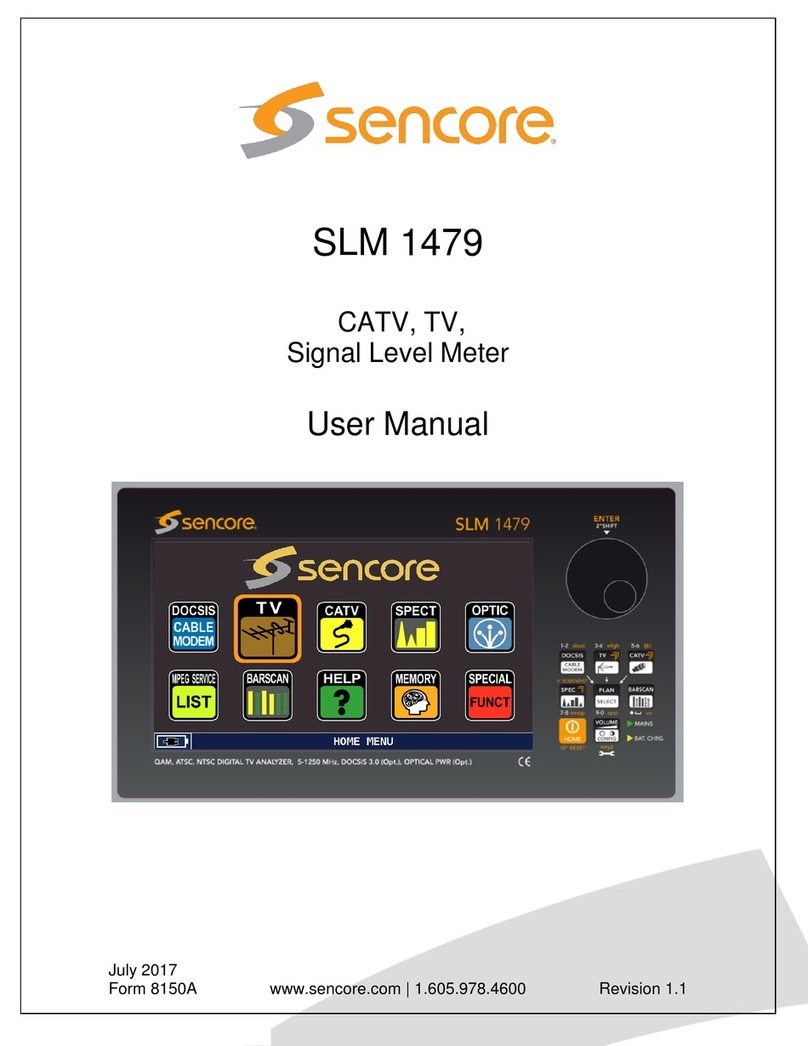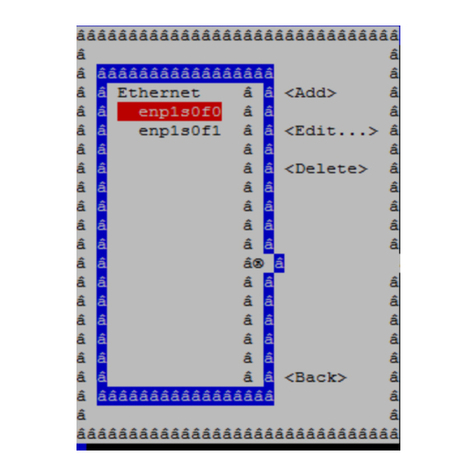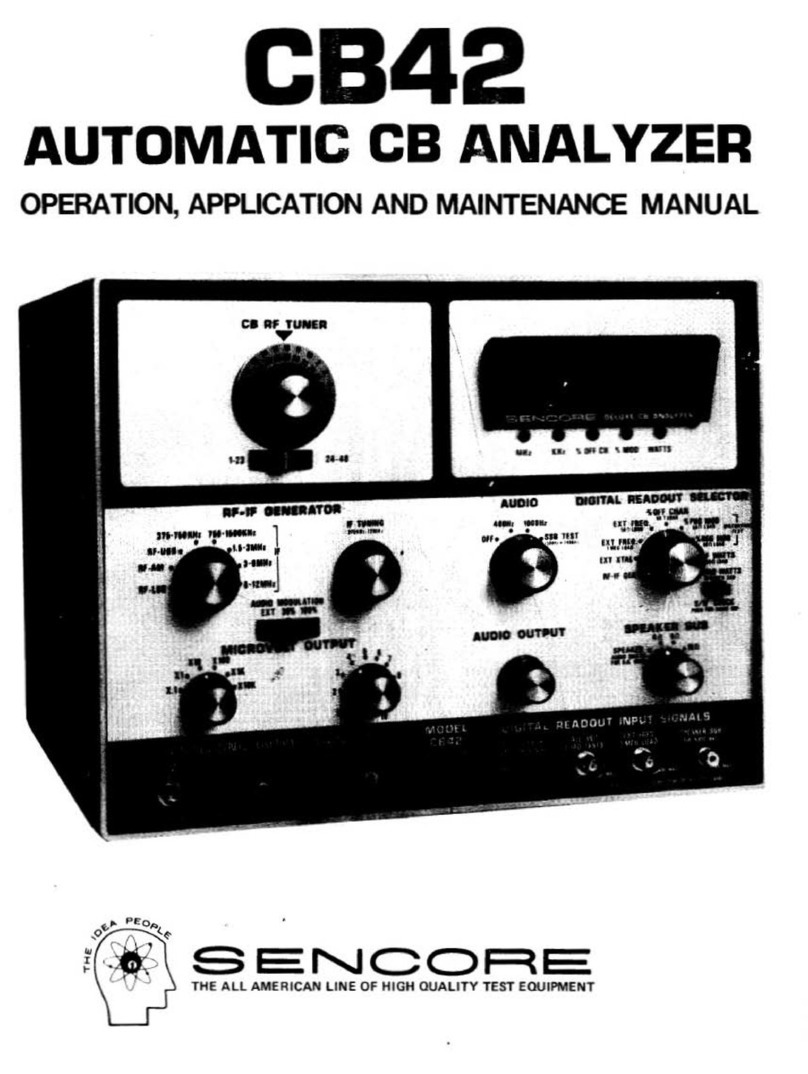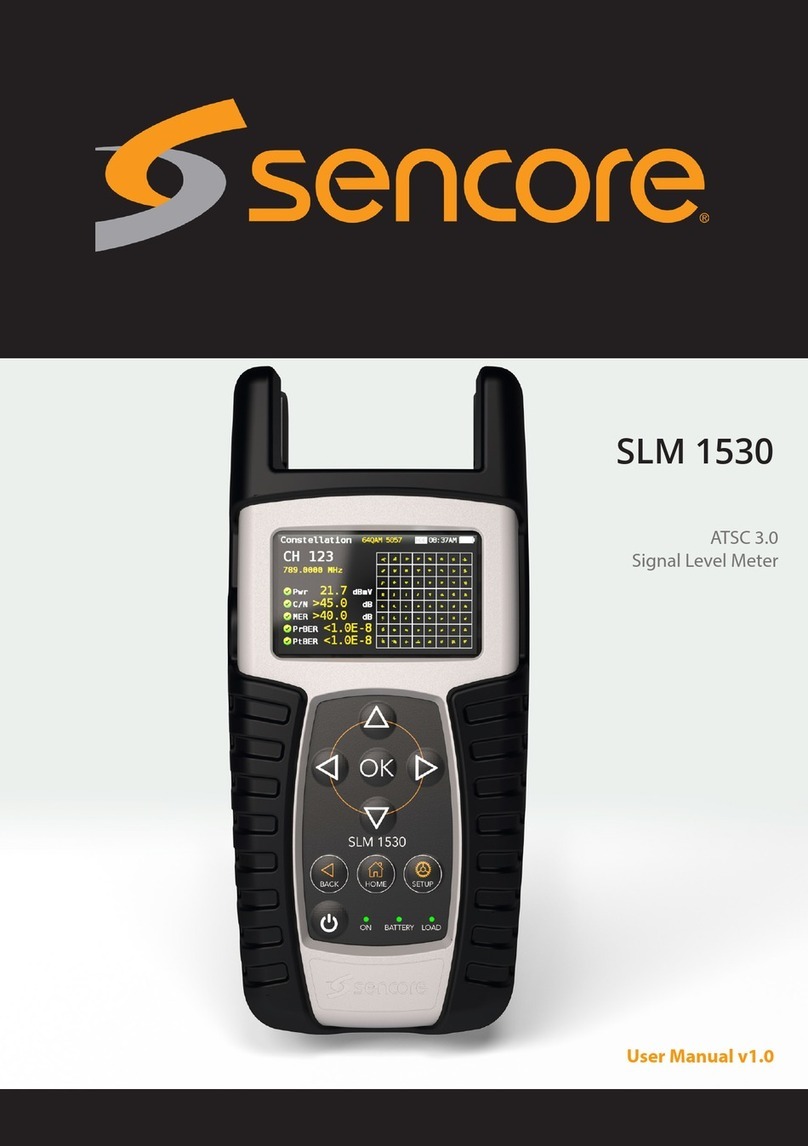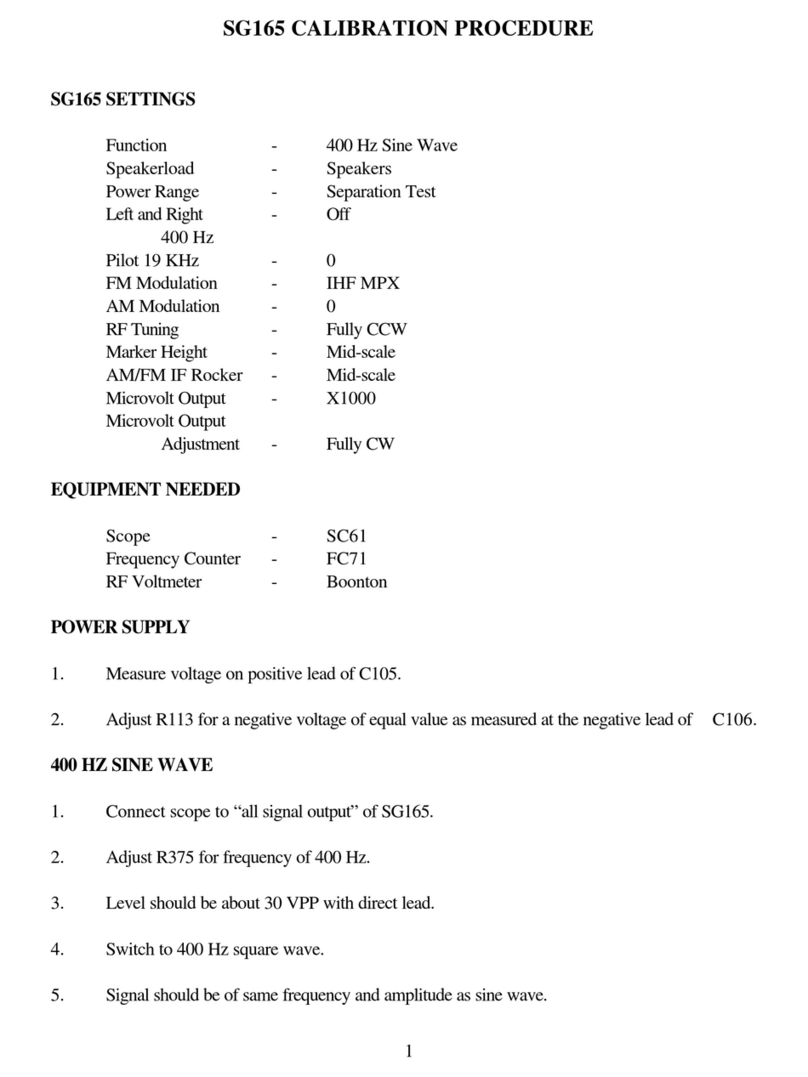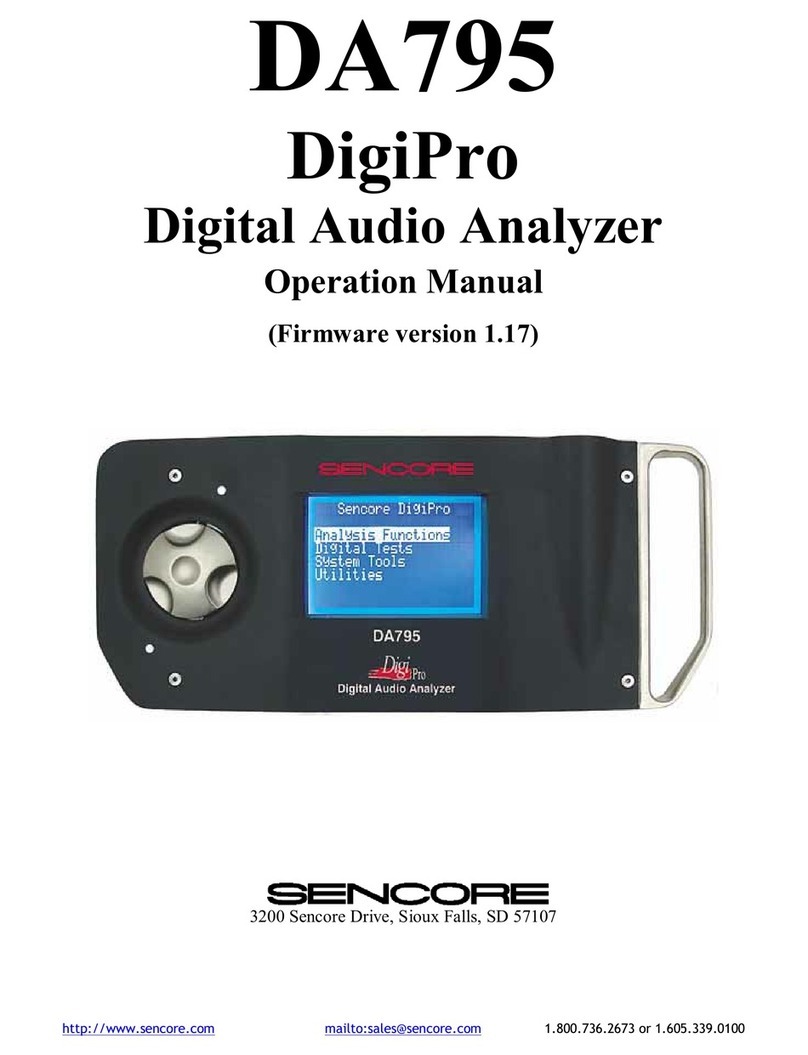
STEREO AUDIO:
This signal produces equal
left and right modulation. When you inject
this signal into working Hi-Fi VCR circuits
you should obtain equal left and right output.
STEREO
R
ONLY AND STEREO L ONLY:
Use
these signals to isolate problems in the left or
rightaudiochannels. Bothchannelsare modu-
lated with the same tone, selected by the
MODULATION switch. When injecting into a
working Hi-Fi channel, you should obtain an
output only on the selected channel.
Using The Playback Signals
1.
Set up the VC93 as follows:
a. VCR FORMAT to desired format.
b. MODULATION to COLOR BARS.
c. PLAYBACK RANGE to level necessary.
d. PLAYBACK SIGNAL to desired signal.
2. Connect the HEAD SUBSTITUTION LEAD.
a. Red lead or leads to injection point. (Both
red leads have the same signal.)
b. Black lead to ground.
3. Adjust the PLAYBACK LEVEL control for
the best picture or audio on the playback
monitor.
When you inject the VC93 Playback Signals
after a defective stage, the playback monitor
will return to a good output. This indicates
that all
the circuits
after the
injection point are
good. If you do not obtain a good picture (or
audio) your injection point is before the
de-
fectivestage. Continue moving your injection
point to a later stage until a good output
returns. The stage before the injection point
that produces a good picture or audio con-
tains the defect.
Table 2 summarizes where to inject the VC93
Playback Signals on the Universal VCR Block
Diagrams. Use this table for a reference when
injecting the VC93 Playback Signals. For ad-
ditional troubleshooting information refer to
Tech Tip #194, “Troubleshooting “Bad Head”
Symptoms with the VC93 All Format VCR
Analyzer.”
DRIVE SIGNAL
The VC93 DRIVE SIGNAL switch and DRIVE
OUTPUT jack provide the proper signals for
injecting into the stages after the FM lumi-
nance detector, chromafrequency convertor
or FM audio detectors. The test points that
require the use of the Drive Signals are sum-
marized in Table 3.
Except for the HEADSWITCH Drive Signal,
the VCR FORMAT switch setting does not
affect the Drive Signals. The HEADSWITCH
Drive Signal changes from 30 Hz to 15 Hz
when the VHS-C Format is selected. The
detected video and audio signals are the
same in all
other VCR formats.
For simplicity,
always set the VCR FORMAT switch to match
the VCR format you are servicing.
The DRIVE SIGNAL switch selects the signal
available at the DRIVE OUTPUT jack. The
peak-to-peak level is adjustable with the
DRIVE LEVEL control, and is displayed in the
right-hand LCD display when the OUTPUT
SIGNAL
MONITOR/DVM
switch is set to
“Drive Signal”. The voltage is variable from
-
10 VPP to +1 0 VPP with the
"-"
signals being
inverted from the
"+"
signals. Use the DI-
RECT TEST LEAD to inject any of the Drive
Signals into the appropriate test point. Fol-
lowing is a summary of each Drive Signal.
COMPOSITE VIDEO: This is the standard
NTSC composite video waveform including
luminance, color, and sync. Use it to inject
into the RF modulator, Y/C mixer output, and
these test points. Universal VCR Block Diagram.
Table 2: Inject the VC93 Playback Signals at
other stages that normally have both lumi-
nance and color signals. The MODULATION
switch determinesthevideo pattern selected.
LUMINANCE: This signal is the
luminance-
only portion of the composite video signal
selected by the MODULATION switch. Use it
in the stages between the output of the FM
luminance detector and the input of the Y/C
mixer.
Tech Tip #193,
“Troubleshooting VCR
Luminance Circuits with the VC93 All Format
Analyzer,” provides additional information
on troubleshooting these stages.
CHROMA: This signal is the
chrominance-
only portion of the composite video selected
by the MODULATION switch. Use it in the
stages between the output of the frequency
converter (color detector) and the Y/C mixer
inputs. Tech Tip #198, "Troubleshooting VCR
Chroma Circuits with the VC93,” provides
additional information on troubleshooting
these stages.
AUDIO:
The Audio Drive Signal is a baseband
(20 Hz-15
kHz)
audio signal at the frequency
determined by the setting of the MODULA-
TION switch. Inject this signal into audio
stages after the FM audio detector.
3.58
MHz:
This Drive Signal is a continuous
sine wave that can be used to substitute for
the 3.58 (3.579545) MHz color oscillator, or
the 3.58 MHz reference for the servo circuits.
HEADSWITCH: This signal duplicates the
square wave signal found at the playback
A/B headswitcher. Most VCR formats use a
30 Hz headswitching signal. VHS-C format
VCRs, however, use both 15 Hz and 30 Hz
switching signals. When the VCR FORMAT
switch is set to VHS-C or SUPER VHS-C the
HEADSWITCH Drive Signal frequency is
15 Hz. The frequency is 30 Hz for all other
formats.
SW30:
This signal substitutes for the 30 Hz
(29.97 Hz) input to the chroma conversion
circuits. The actual frequency is the compos-
ite video frame rate, 29.97 Hz. Use the SW30
Drive Signal and the LUM
&
CHROMA Play-
back Signal when troubleshooting chroma
stages.
VCR to the VC93 using the CHROMA LOCK
CHROMA KEY PULSE:
The CHROMA KEY
PULSE Drive Signal provides a substitute for
the horizontal sync input to the chroma con-
version circuits. Always inject the LUM &
CHROMA Playback Signal and phase
